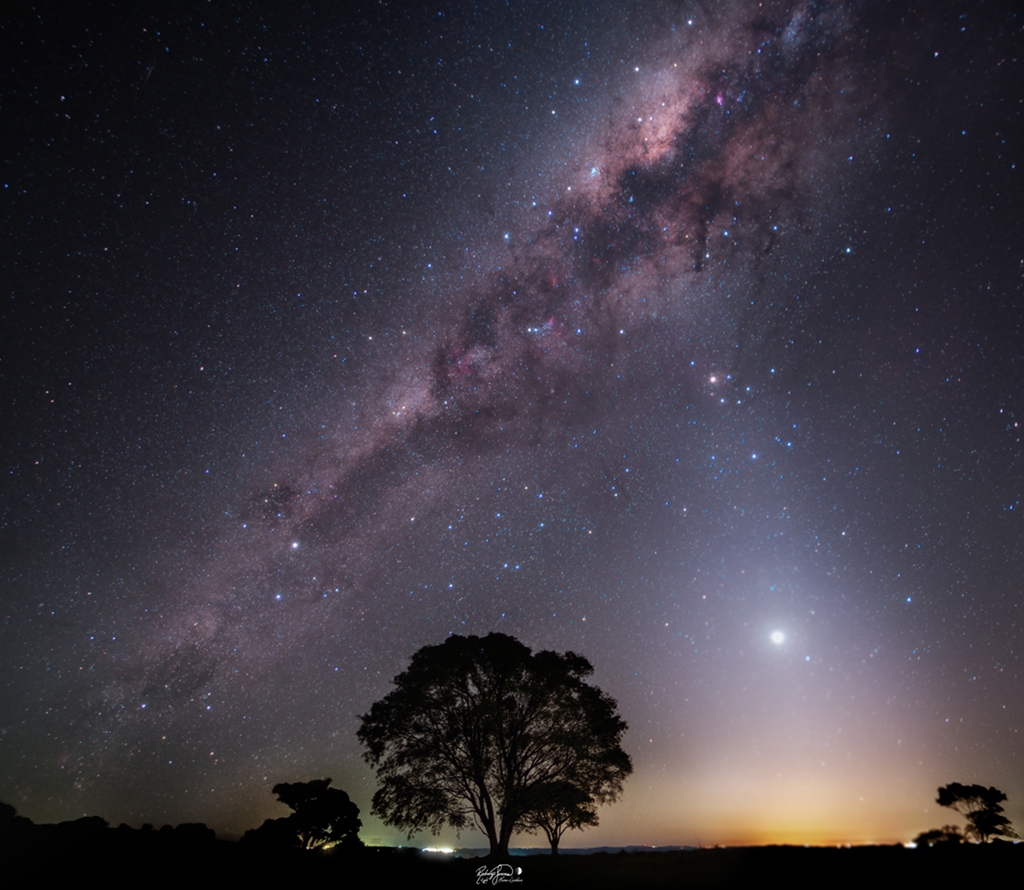光明和尘土飞扬的夜晚
(原标题: A Light and Dusty Night)
2021-10-02
浏览次数: 132
在南半球早春的夜空中,金星像一颗明亮的晚星,躺在靠近西方地平线的地方。为了制作合成视图,9月25日在巴西南部卡斯卡维尔拍摄了跟踪天空和固定前景的曝光。日落后,金星似乎沉浸在黄道光的圆锥体中,阳光从太阳系黄道面上的尘埃中散射出来。事实上,从地球的任何一个半球来看,黄道光在春分附近的日落之后(或秋分附近的日出之前)最明显,此时黄道光的发光弧线与地平线呈陡峭的角度。在这个夜晚的日落之上,黄道光延伸到银河系中央凸起的丰富的星场和巨大的星际尘埃云。沿着银河系从中央凸起处回到地平线,你会发现离太阳最近的恒星系统,半人马座阿尔法星,距离只有4.37光年。
查看原文解释
Posing as a brilliant evening star, Venus lies near the western horizon in this southern hemisphere, early spring, night skyscape. To create the composite view exposures tracking the sky and fixed for the foreground were taken on September 25 from Cascavel in southern Brazil. In view after sunset, Venus appears immersed in a cone of zodiacal light, sunlight scattered from dust along the Solar System's ecliptic plane. In fact from either hemisphere of planet Earth, zodiacal light is most visible after sunset near a spring equinox, (or before sunrise near an autumn equinox) when its luminous arc lies at steep angles to the horizon. Extending above the sunset on this night, the zodiacal light reaches toward rich starfields and immense interstellar dust clouds in the bulge of the central Milky Way. Follow along the Milky Way from the central bulge back toward the horizon and you'll spot the closest star system to the Sun, Alpha Centauri, a mere 4.37 light-years away.
© Rodrigo Guerra
